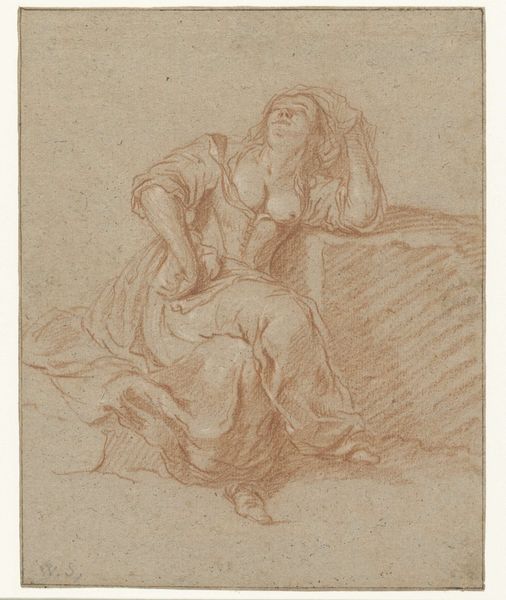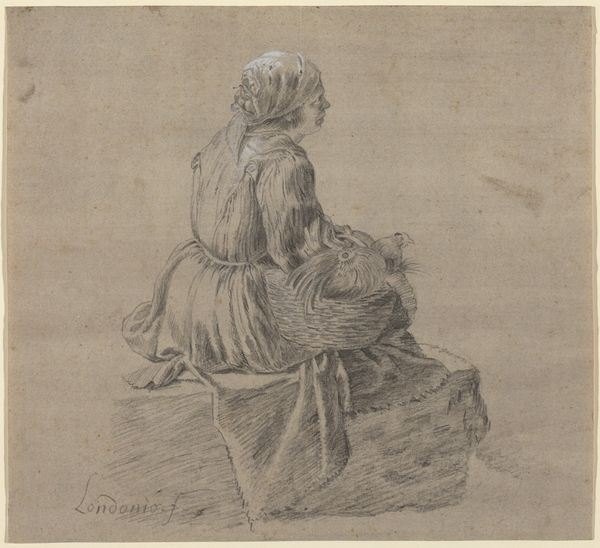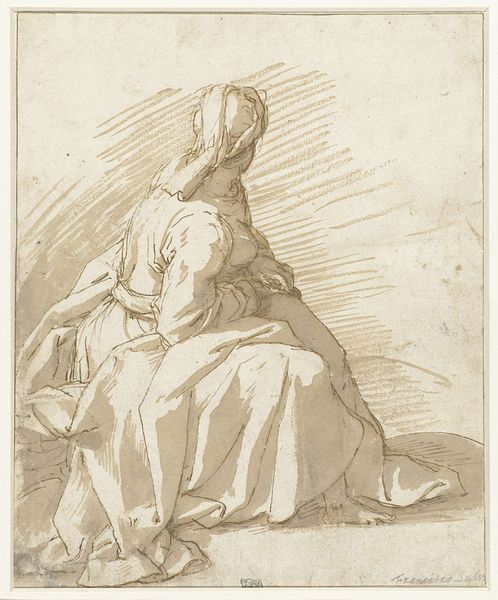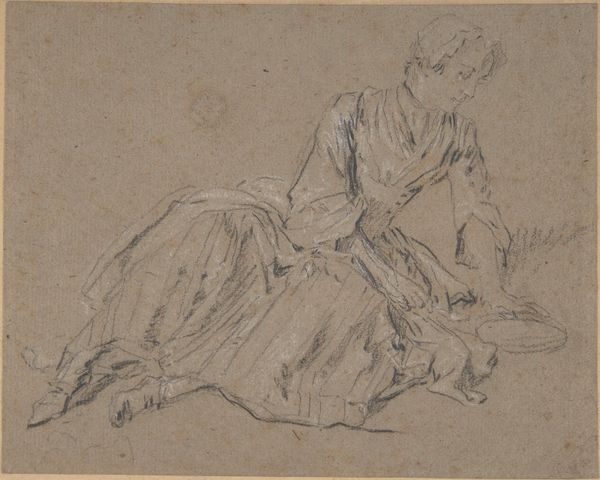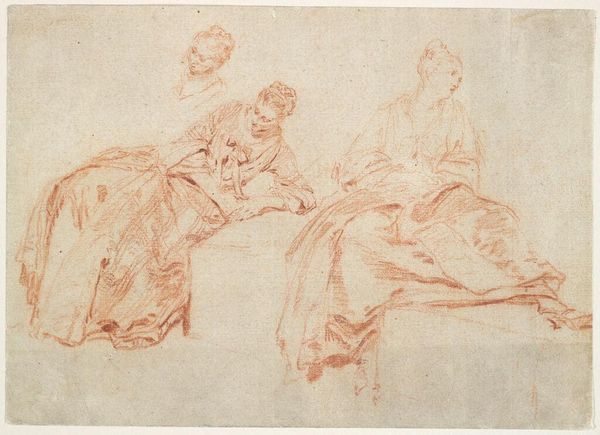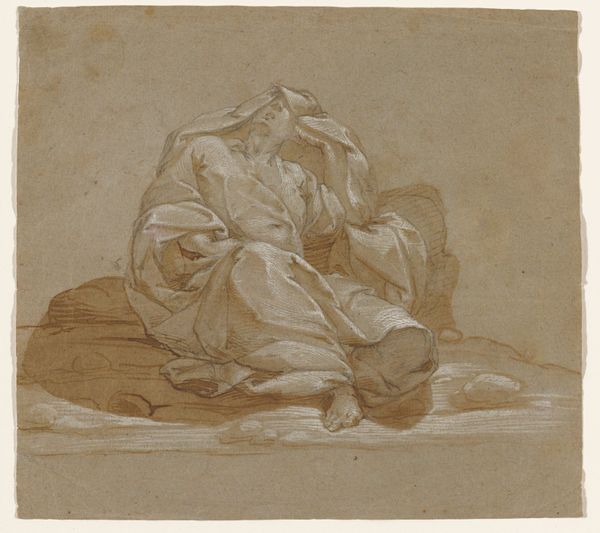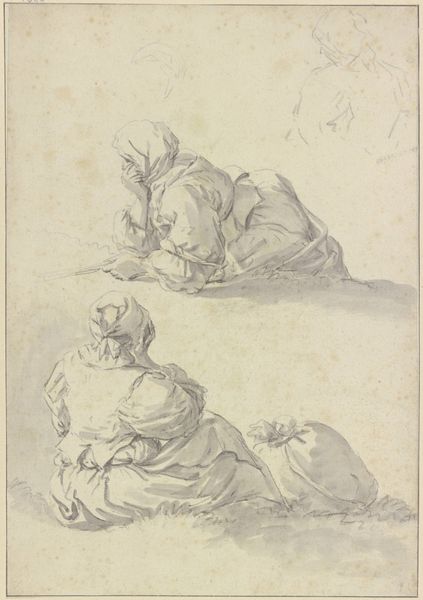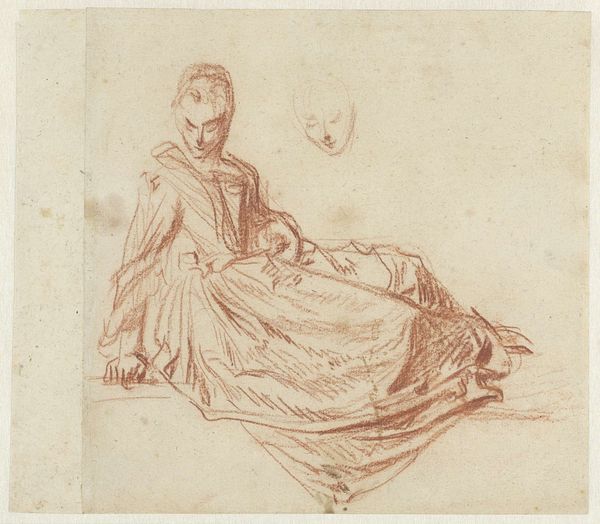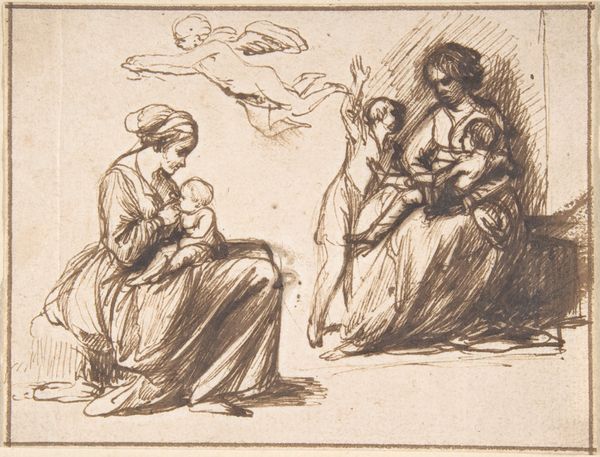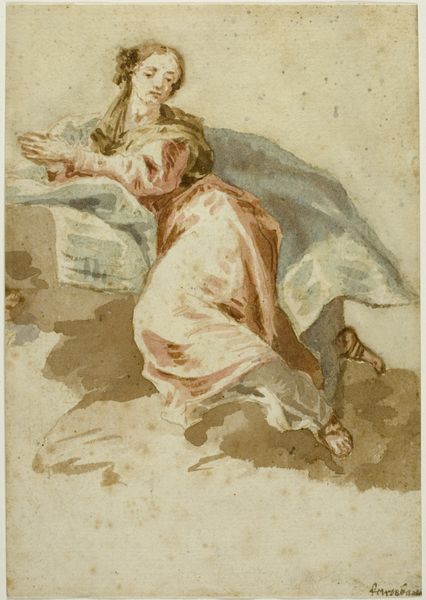
drawing, paper, pencil
#
portrait
#
drawing
#
etching
#
figuration
#
paper
#
pencil drawing
#
pencil
#
genre-painting
#
rococo
Dimensions: height 202 mm, width 339 mm
Copyright: Rijks Museum: Open Domain
Curator: Welcome. Here in gallery seven, we're looking at Jean-Antoine Watteau’s "Two Studies of a Seated Woman," a pencil drawing on paper dating from around 1709 to 1721, held at the Rijksmuseum. Editor: The immediate impression is one of quiet introspection. There’s a softness to the rendering, and the monochromatic palette contributes to this feeling of gentle melancholy. It is an image full of muted contemplation. Curator: Watteau was, of course, a pivotal figure in the development of Rococo art, which sought to capture fleeting moments and subtle emotions rather than grand historical narratives. Think about the aristocratic social milieu and the loosening of strict courtly norms that influenced this shift toward a more intimate artistic experience. Editor: Absolutely. I am wondering about the very act of ‘studying’ a female figure in this way. Considering the positionality of Watteau as a male artist depicting a female sitter, and how it perpetuates this notion of the female as a passive muse or subject to be scrutinized and cataloged for her aesthetic attributes. Curator: While such power dynamics certainly warrant consideration, I would also point out Watteau’s sensitivity to human vulnerability. Look closely at the fluidity of line, particularly around the draping fabric. This highlights Watteau's acute skills of capturing the fall of light and the way fabrics articulate unspoken narratives, reflecting the culture that revered decoration and grace. Editor: But what about the fact that we are looking at "studies," plural, which can seem indicative of this male "gaze" objectifying the female figure to render an ideal representation through iteration. In addition, we could connect this drawing and this technique of the old masters with its repercussions nowadays, when young women, especially actresses, are submitted to such level of exhausting and repetitive poses. The effects are pervasive and demand attention. Curator: Those implications cannot be dismissed. At the same time, the artist offers some nuance in his representations. Watteau doesn’t idealize his subject to mythical degree like prior artistic generations. Editor: Fair enough. Perhaps it's in the interplay between his technical skill, and this subject/object relationship to which you alluded, where we can begin to unpack its complexities. Thank you. Curator: Yes, looking at this pencil drawing by Watteau opens several doors, prompting further explorations into a given artistic process as it intersects with art's complicated historical and social milieu. Thank you.
Comments
rijksmuseum about 2 years ago
⋮
Taking advantage of the sheet’s horizontal format, Watteau drew the same woman twice, shifting only his viewpoint and distance from the model. The complex folds of her dress are executed in a great economy of means – with nervous hatching and blank reserves. Watteau made hundreds of similar figure studies, which he often reused in his paintings.
Join the conversation
Join millions of artists and users on Artera today and experience the ultimate creative platform.
